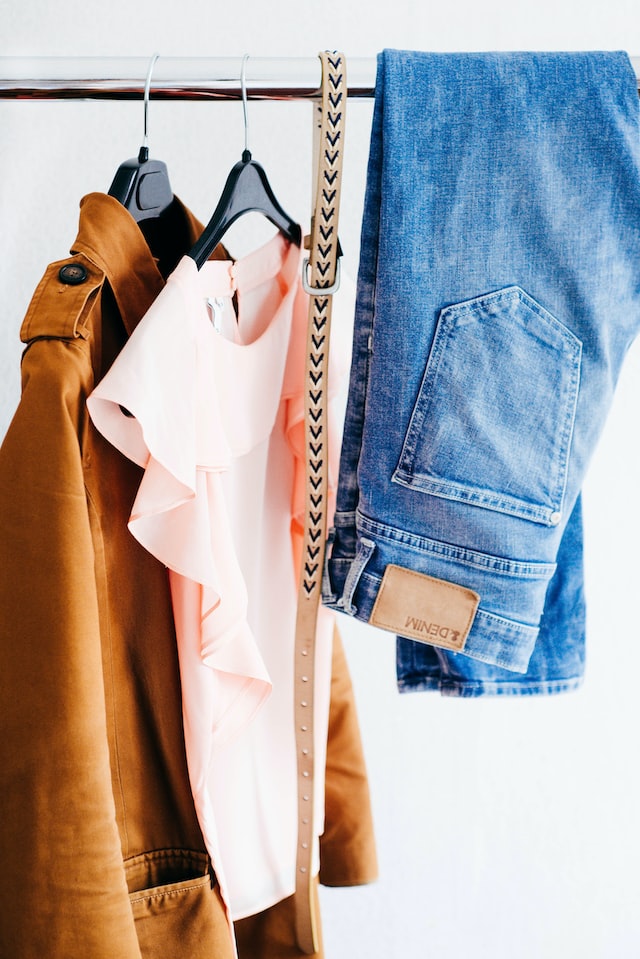The Ready to Wear concept was introduced during the Industrial Revolution between the 18th and 19th centuries.
Technology has developed in such a way as to be able to create mass and standardized clothing that has generated the appearance of a working class that is more attractive and well dressed than until then and with more practical, comfortable and cheaper models. All this innovation has given rise to a society different, where everyone felt freer from so many formalities and with greater purchasing power
Later, in the 20th century, with a view to lowering prices even further, companies shifted production processes to developing countries, where labor was more accessible.
The change in the way clothing is manufactured and consumed gave rise to the mass production model we know today. Since then, there has been an accelerated pace of production and consequent purchase of clothing. This phenomenon known as fast-fashion is one of the main factors responsible for the Ecological Footprint.
The fashion world is always evolving and it is almost impossible not to associate evolution with technology, after all, this is the era we live in. Technology allows us to create new combinations, establish new relationships, new interactions and is much more present in the fashion industry. fashion than you can imagine. This is why we are talking about one of the most polluting industries.
The sustainability manifesto has above all communicative motives: it serves to convey, at a crucial moment for fashion, in an effective and concise way and with great impact, the work that is done behind the scenes, at a crucial moment for fashion.This manifesto tells the story of clothing and accessories from creation, transformation and presentation in stores. It serves, therefore, to publicize and situate the problems that are arising and also to justify what has not yet been done due to lack of time, although we are aware that the greatest challenge is precisely against time. In addition to good intentions, urgent actions are needed, practical solutions, effective ideas and a more concrete explanation for consumers of the harm to which we are exposed.
The real weapon, therefore, is called conscience. You need to know that brands are really taking big steps forward. For example, a good “rule” that companies are using to compensate for the excess pollutants they produce (as a result of the presentations of their numerous collections) is compensation through reforestation projects.
The future involves circular fashion and the use of technology. It is an essential factor for changing habits to happen faster.
Redesigning the fashion industry towards the circular economy is a challenge and also a reflection of a market that urgently needs to change.
It is impossible to talk about tomorrow without associating it with the word “sustainability”, or to talk about the future of fashion without talking about “circular fashion”, after all, there has been a long debate about the scarcity and unbridled use of our natural resources.
Conscious Consumption is the future of fashion that is increasingly digital, creative and sustainable.
Today we have a huge amount of technological tools that help us in the challenge of avoiding waste and building a fairer and more sustainable world.
The company Tommy Hilfiger, through e-commerce, is already at full steam with digital production and it is estimated that sales of the next collection in this format will start in 2022. In other words, the brand's pieces will not be physical until actually purchased, many of the clothes featured online are digital only and look so good they look like the real thing. This form of sale avoids the unbridled production of pieces that may not be sold and remain piled up on the shelves.
But nothing is as sustainable and creative as the models presented by circular fashion offered by second-hand stores. Here, Retry has an important commitment with consumers from reception, promotion and sale of second-hand pieces, giving them a new opportunity to be reborn in another body and shine.
Today, with access to information and technology, what we wear says a lot about how we see and react to the problems that surround us and about our values.
But sustainability is not a recent thing. If we think that before “Vetements” installed a pile of clothes in a window at Harrods, in London, to draw consumers' attention to the excessive waste of the industry, Vivienne Westwood had already written a long manifesto about everything that was wrong if it was passing on the planet because of fashion.
Stella McCartney, in turn, when she started her career in 2001, had promised herself and the world that she would do everything for all of us to have a future on a planet where people live better and one of her commitments was to end the use of animal skin and look for sustainable alternative materials. Eileen Fisher was one of the most important if not the greatest pioneers of circular fashion.
In 1984, Eileen created a brand where sustainability was not seen as a marketing strategy but as a priority. It founded its first recycling project in 2009, then called “Green Eileen”, encouraging consumers to “return” the brand's parts that they no longer used so that they could later be resold at a discount.
Organic fibers, responsible fibers, dyeing, certificates and natural dyeing was one of her preferences. As well as valuing fair trade, handicrafts and women's work. Its motto: Fight against waste, defend human rights, protect natural resources and fight climate change.
Says Eileen, “We need to move from a throw-away economy to a conscious economy.”
“I've thought about it and I don't think I have to give you the depressing news that our planet is on fire or that this industry is not sustainable.' I think you all know that. And I know that many of you are already doing a good job. Therefore, I want to take this moment to encourage you to use your creativity, and continue this mission”, declared Vivienne Westwood, one of the most strident and nonconformist creators in the fashion industry.
In 2012, during the spring/summer 2013 presentation of her Red Label, Vivienne Westwood took the catwalk by storm, looking like an eco-warrior ready to fight for the environment, with a t-shirt that read “Climate Revolution” .
Westwood had only one thing to say: "Buy less, choose well, make it last." Years later, the “mother of punk” reinforced its punk attitude with an extraordinarily powerful campaign. “Part of my philosophy is — if we had culture instead of consumerism, we wouldn't be in this environmental mess,” defended Westwood.
Consumers are increasingly aware and informed about sustainability and are demanding more transparency from brands about products and production methods.
But although the environmental impact is a matter of interest to everyone and is therefore very important, the price paid for the products is also important, which weighs heavily on the purchase decision. In other words, the price, quality, model and style are still an essential factor.
In theory, globality is the most important thing and more and more people are concerned about the future of the planet, but when it comes to paying the bill, each person's accounting prevents the right attitude to be taken.
However, the most powerful brands are taking the reins and are already beginning to give relevance to this subject, while others remain in a romance of reflection and “dolce far niente”, ending up not assuming the additional burdens that sustainable attitudes require.
Keeping the balance between the need to save the planet and the business balance that will evidently be reflected in the country's economy, makes this action an act that should be well considered since it can generate greater unemployment and consequently a greater imbalance in the economy.
Unfortunately sustainable products are still not accessible to any purse so education and awareness should start.
Small gestures make all the difference. It is not possible to change the world from one day to the next, but it is necessary and urgent to inform people in order to start inserting new habits into their common habits.
As I have already mentioned, the fashion industry is one of the most polluting of the environment. But sustainable fashion is based on preserving the environment. It is imperative to reduce the amount of pollutants used in the manufacture of products by minimizing the removal of raw materials from nature. The entire production process, right through to distribution and sale, are attacks against sustainability, but it is a very long path to quickly relearn and implement new habits.
Despite this, there are several ways in which fashion can be sustainable, but the social and economic aspects must not be forgotten.
The choice of raw materials is an important aspect of sustainable fashion. In this case, the ideal is to use biodegradable fibers produced without the use of pesticides or other toxic products.
The manufacture of fabrics from synthetic fibers (polyester, viscose, nylon, etc.) requires a large amount of chemical products that pollute the environment. Natural fabrics, such as wool, silk and cotton, do not require as many chemicals during their manufacturing process.
In the manufacture of “sustainable fashion” it is important to opt for the use of natural dyes extracted from vegetable matter; pay greater attention to the use of water resources, which are already in deficit; replace common cotton with organic among others; reduce fabric waste during the cutting and sewing stages; respect the rights and guarantee the well-being of workers; prioritize production on a smaller scale; using recycled fibres, from waste from production itself or from post-consumer waste, and from fibers and other quality raw materials that guarantee greater durability of the product.
Another big change is digital shopping. With more shoppers enjoying the wonders of online, brands need to catch up. Despite the fact that the virtual space does not allow trying out pieces in “braille”, these requirements are offset by the convenience and speed of acquisition.
The most successful fashion brands of the future will not only make their products available online, but will also create an immersive digital shopping experience through tools such as virtual fit or virtual stylists.
And the latest change is the simplification of everything from the trends presented on the catwalks to the delivery of the pieces to the consumer.
Other sustainable ways and those we can all put into practice are:
- RECYCLE, for example: if you ruin a dress, you can make a blouse for your granddaughter, or use the fabric to make a bag of bread;
- REUSE - give the piece the opportunity to go outside more often recreating new outifs;...
- MODIFY - transform the piece by applying fabrics or accessories so that it looks new and different or redoing the piece by modifying the model and giving rise to a different and in this case unique piece.
And think that all these small steps that you will start to take are fundamental for the sustainability of the planet. Share these initiatives with your family and friends. Saving the planet is a joint task and your presence is an indispensable and integral part of the process.
In fact, only together and with everyone's collaboration and commitment can we begin to feel the effects and improvements in the environment.


1 comment
Adorei! Estamos sempre a aprender e dá que pensar!
Muito obrigada por mais este contributo.
Maria José Ferreira